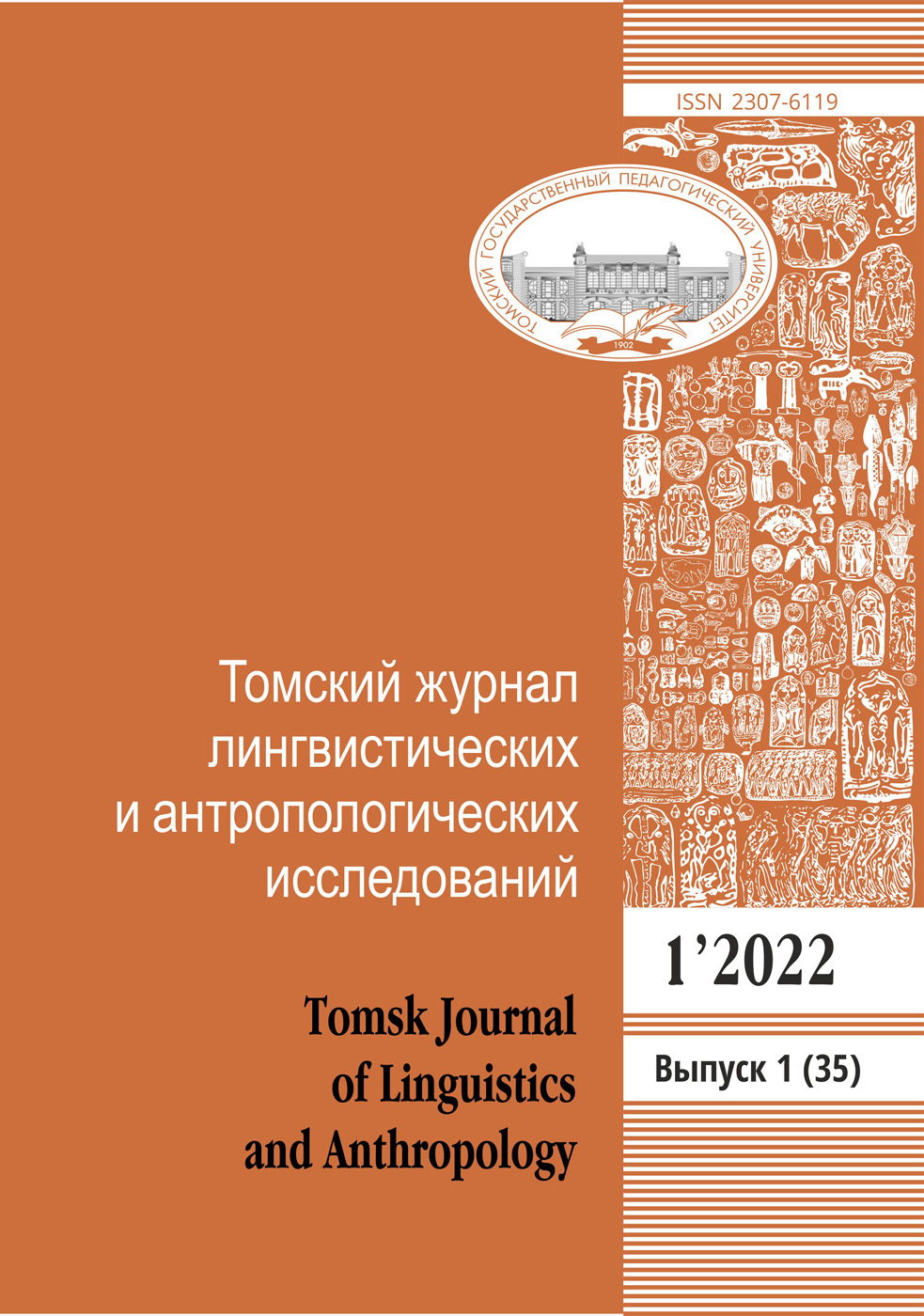PAST AND FUTURE IN HOME LIFE IN RUSSIA: CHICHIKOV AND THE LANDOWNERS
DOI: 10.23951/1609-624X-2024-1-114-122
Home Life in Russia (1854) is a distorted translation of Nikolai Gogol’s Dead Souls, aiming mainly at forming a negative image of Russia and its people. The original key idea of spiritual rebirth is replaced by that of Russia’s moral inferiority to Britain, shifting the focus to the present, originally subordinate to the past and future. The article examines how the original temporal imagery transforms in the novel. Home Life in Russia and Dead Souls are examined using comparative, cultural-historical and hermeneutical methods. The now specified present moves from the 1830s to the 1840s, helping to accentuate everyday problems as opposed to the existential ones. The characters originally serving as anthropological models (Krivonos) become (ethno)social types. They are said to reliably demonstrate the current state of Russian society, depicted as barbaric, backward, and morally decayed while also full of ambition, enterprise, and the urge to acquire. In general, each of the characters strongly resembles the original one, but the most significant indications of their potential spiritual rebirth, both implicit (the landowners) and explicit (Tchichikoff), disappear from the text. This notably reduces mentions of the characters’ future and past, allowing them to escape the dead(ly) present. These changes occur both in the plot and narrative. Tchichikoff and Plyushkin, connected both in the original by the prospect of their spiritual rebirth and in Home Life in Russia by the finality of their fall, transform the most noticeably. Transforming or omitting the depictions of the characters’ past and future, the author reduces them to the image they have in the present. Each of them becomes a static, complete picture in the newly created gallery of morals.
Keywords: Gogol, Dead Souls, image of the future, free translation
References:
1. Home Life in Russia. Vol. 1. London, Hurst and Blackett, 1854. 308 p.
2. Lefevre C. Gogol and Anglo-Russian Literary Relations during the Crimean War. American Slavic and East European Review, 1949, no. 2 (8), pp. 106–125.
3. Nesterenko O. V. Poema N. V. Gogolya “Myortvyye dushi” v angloyazychnykh perevodakh XIX–XXI vv. Avtoref. dis. kand. filol. nauk [N. V. Gogol’s poem Dead Souls in English translations of the 19th – 21st centuries. Abstract of thesis cand. philol. sci.]. Tomsk, 2010. 23 p. (in Russian).
4. Athenaeum. 2 December 1854. Р. 1454–1455.
5. Lann E. L. Literaturnaya mistifikatsiya [Literary Mystification]. Leningrad, Gosudarstvennoye izdatel’stvo Publ., 1930. 233 p. (in Russian).
6. Gogol N. V. Polnoye sobraniye sochineniy i pisem [Complete Works and Letters]. Volume 7–1. Moscow, Nauka Publ., 2012. 808 p. (in Russian).
7. Krivonos V. Sh. Vremennaya struktura poemy N. V. Gogolya “Myortvyye dushi” [Temporal structure of Nikolai Gogol’s Dead Souls]. Romantizm vs realizm: paradigmy khudozhestvennosti, avtorskiye strategii [Romanticism vs Realism: Artistic Paradigms, Author’s Strategies]. Ekaterinburg, Ural university Publ., 2011. Pp. 237–255 (in Russian).
8. Besprozvannyy V., Permyakov E. Iz kommentariyev k pervomu tomu “Mertvykh dush” [From the commentary to the first volume of Dead Souls]. Trudy po russkoy i slavyanskoy filologii. Literaturovedeniye [Works on Russian and Slavic Philology. Literary studies]. Tartu, Tartu Ülikooli Kirjastus, 1994. V. 1. Pp. 156–177 (in Russian).
9. Vayskopf M. Vremya i vechnost’ v poetike Gogolya [Time and Eternity in Gogol’s Poetics]. Ptitsa troyka i kolesnitsa dushi: Raboty 1978–2003 godov [Troika Bird and the Chariot of the Soul: Works of 1978–2003]. Moscow, Novoye literaturnoye obozreniye Publ., 2003. Pp. 234–254 (in Russian).
10. Home Life in Russia. Vol. 2. London, Hurst and Blackett, 1854. 314 p.
11. Krivonos V. Sh. “Myortvyye dushi” Gogolya: izobrazheniye cheloveka [Dead souls of Gogol: the image of a person]. Izvestiya RAN. Seriya literatury i yazyka, 2012, no. 1 (71), pp. 24–31 (in Russian).
12. Čuveleva N. Mertva li dusha Manilova? (popytka interpretatsii obraza Manilova v poeme N. V. Gogolya “Myortvyye dushi”) [Is Manilov’s soul dead?: (an attempt to interpret the image of Manilov in N. V. Gogol’s poem Dead Souls)]. N. V. Gogol: Bytí díla v prostoru a čase: (studie o živém dědictví). Brno, Masarykova univerzita, 2015. Pp. 95–102 (in Russian).
13. Cut one’s eyeteeth. Farlex Dictionary of Idioms. URL: https://idioms.thefreedictionary.com/cut+one%27s+eyeteeth (accessed 7 May 2023).
14. Savinova A. G. Naturfilosofskiy kod v poetike khudozhestvennogo mira N. V. Gogolya: vseob’’yemlyushcheye dykhaniye [Natural philosophy code in N. V. Gogol’s poetics: universal breathing]. Sibirskiy filologicheskiy zhurnal – Siberian Journal of Philology, 2010, no. 1, pp. 34–38 (in Russian).
15. Podoroga V. A. Mimesis. Materialy po analiticheskoy antropologii literatury [Mimesis. Materials on the analytical anthropology of literature]. Moscow, Kul’turnaya revolyutsiya; Logos, Logos-altera Publ., 2006. V. I. 688 p. (in Russian).
Issue: 1, 2024
Series of issue: Issue 1
Rubric: RUSSIAN AND WORLD LITERATURE
Pages: 114 — 122
Downloads: 690





